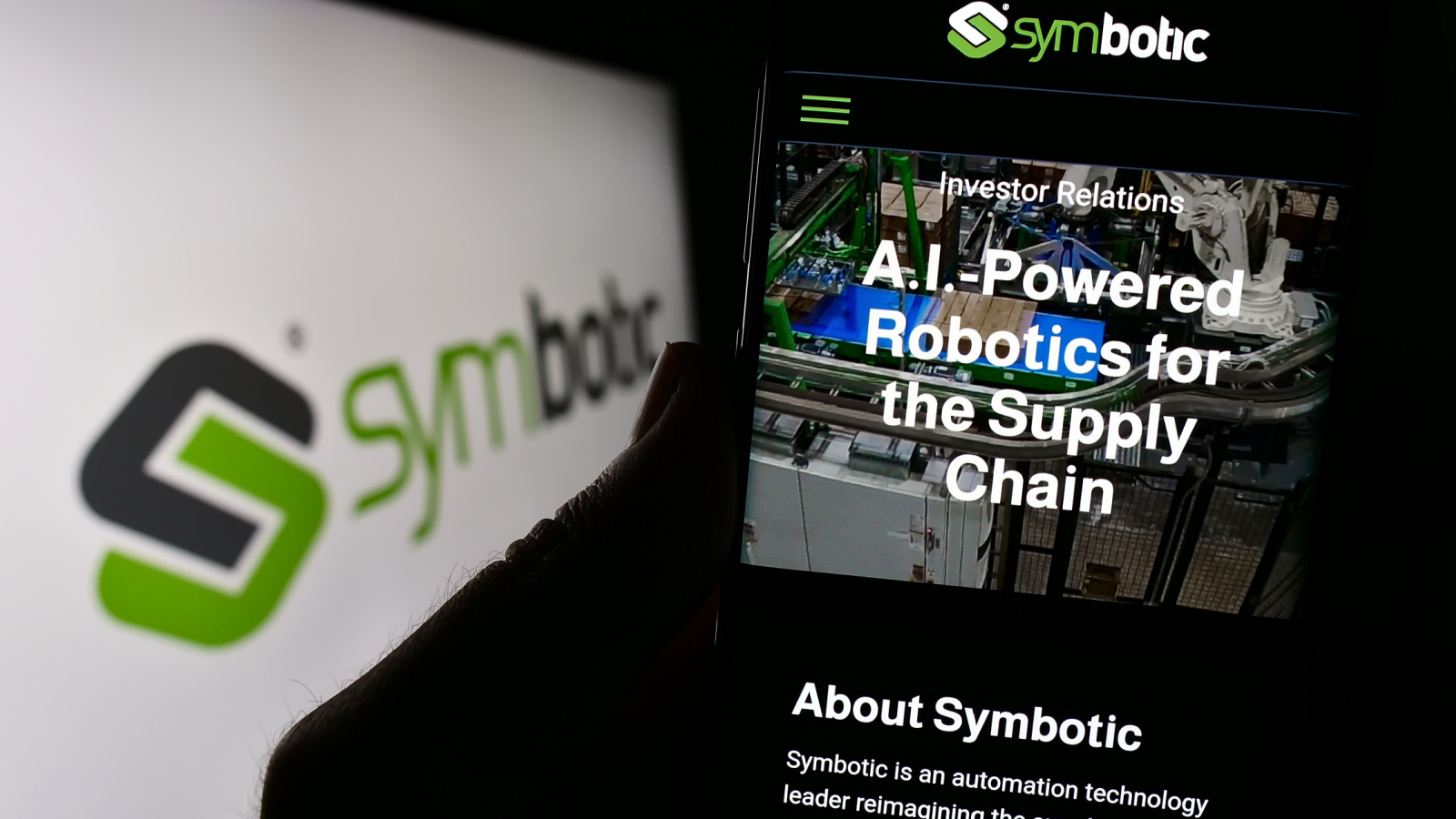With fleets of autonomous robots, Symbotic enables high-speed, high-density operations that surpass traditional methods
The revolution will not wait for permission.
Artificial intelligence is tearing through old industries, exposing inefficiencies and reshaping power – from America’s warehouses to Washington’s bureaucracies. In this race for survival, Symbotic (SYM) isn’t just keeping pace – it could quietly become indispensable.
As Amazon (AMZN) deploys a million robots and governments debate how to “drain the swamp,” Symbotic stands ready to automate everything in its path – whether the legacy players like it or not.
Symbotic Stock: The Warehouse Automation Enabler
Symbotic specializes in autonomous warehouse solutions, using AI-powered robotics to handle inventory sorting, storage, and retrieval.
This technology matters because retailers and logistics providers are under growing competitive pressure to match Amazon’s automation capabilities. Amazon recently hit a milestone of one million robots deployed in its warehouses, setting a new bar for operational efficiency.
While Amazon designs its robotics systems in-house, Symbotic fills a crucial gap for virtually every other large retailer that needs to keep pace. Companies like Walmart (WMT) and Albertsons (ACI) rely on Symbotic’s systems to modernize warehouses, reduce labor costs, and increase throughput.
AI Driving a Broader Jobs Correction
This warehouse automation story fits into a much larger theme – the AI-powered jobs correction. While public debate often focuses on white-collar professions threatened by AI, the transformation is already well underway in physical labor markets.
This shift isn’t confined to the private sector. The emergence of Elon Musk’s proposed “America Party,” discussed in detail on Being Exponential, signals that AI could soon play a central role in government reform agendas. The Musk-backed platform promotes a tech-first approach to governance, arguing that AI could help cut government spending, reduce deficits, and “drain the swamp” by automating inefficient public sector jobs.
As we argued during the podcast, this transformation may be inevitable:
“If Amazon can deploy a million robots and dramatically cut its costs, why isn’t the government doing the same? At some point, all political parties will feel the pressure to embrace a tech-first approach.”
In this context, Symbotic’s core business – optimizing warehouse operations with AI and robotics – may not only benefit from retail demand but could also find opportunities in public sector logistics and government supply chains.
Symbotic’s Competitive Edge
Symbotic’s competitive edge lies in the nature of warehouse environments: known, structured, and repeatable tasks. AI-driven robotics thrive where environments can be mapped, programmed, and optimized – and a warehouse is exactly that. Unlike autonomous vehicles, which struggle with unpredictable public roads, warehouse robots operate in controlled conditions, making AI deployment faster and more reliable.
Additionally, the growth in physical AI – or robotics – as the next wave of AI investment, positions Symbotic as an early leader in what may become a multi-trillion-dollar addressable market. Robotics is increasingly viewed as “low-hanging fruit” in AI implementation, and Symbotic is already a recognized vendor with enterprise-scale deployments.
Investors seem to be waking up to this opportunity. While stocks like Nvidia (NVDA) and Meta Platforms (META) dominate AI headlines for their role in large language models and data-center infrastructure, Symbotic offers pure-play exposure to AI’s impact on the physical economy.
This distinction matters because government adoption could open an entirely new vertical for SYM. A future where federal agencies modernize logistics and inventory management with private-sector AI partners could give Symbotic significant tailwinds.
The Bigger Picture: AI from Warehouses to Washington
The debate on Being Exponential also touches on a critical reality: whether or not Musk’s America Party succeeds politically, and how the conditions that make a third-party AI-forward platform appealing reflect deeper public dissatisfaction with inefficiency.
Just 30% of Americans now say they are satisfied with the state of democracy – a historic low – and many of the frustrations stem from bureaucratic inertia.
AI’s promise of cutting costs, improving productivity, and delivering better outcomes could resonate across party lines. And while Symbotic itself won’t dictate political outcomes, its product portfolio aligns neatly with this broader national conversation about using technology to improve government performance.
Investors who understand this dynamic could see SYM stock not just as a warehouse robotics play but as an early leader in the emerging “government AI” sector.
The Bottom Line
The next decade’s most successful AI investments won’t all come from software and semiconductors. The rise of physical AI – embodied by robotics in warehouses, factories, and eventually government operations – may offer underappreciated opportunities.
Symbotic stock recently decisively retook its 200-day moving average, and a pending “golden cross” – where its 50-day moving average crosses above its 100-day average – suggests growing momentum. After languishing for much of early 2024, the stock now appears poised for a new breakout.
Yes, Symbotic’s customer concentration (notably Walmart) and execution risks remain material. But in the context of a global race for AI-enabled efficiency – from Amazon’s robots to government logistics reform – Symbotic’s addressable market is arguably still expanding.
SYM sits at the crossroads of this transformation.
As the economy moves from digital automation to AI-powered physical systems, Symbotic’s technology could help industries and governments alike close efficiency gaps.
For investors, SYM may be more than a warehouse automation play – it could become one of the key stocks leading the AI revolution from warehouses to Washington.
And we believe the best AI stocks to buy right now are those directly enabling this American AI Boom…
Not through data centers or chip fabs but, rather, through a critical piece of technology that will soon be ubiquitous because of them.
Behind the scenes, these innovations are quietly laying the foundation for something even more profound: humanoid robotics.
Think warehouse robots that learn on the fly, medical assistants that adapt in real time, or domestic helpers that move, see, and reason like humans do.
Many expect these machines to take the world by storm over the next few years, transforming life as we know it – as well as the entire global labor market…
Advanced robotics technology could power an entirely new economy built on intelligent machines. And the companies building that backbone may be the biggest winners of all.









